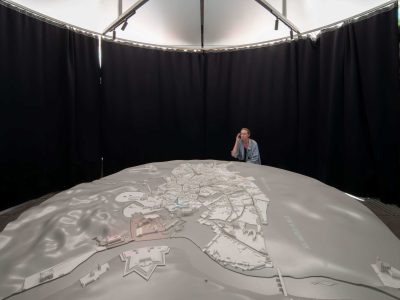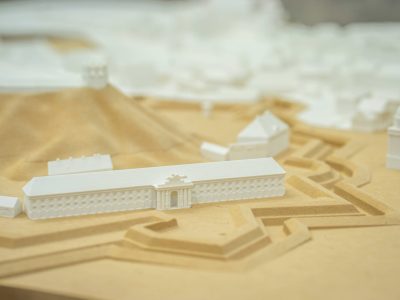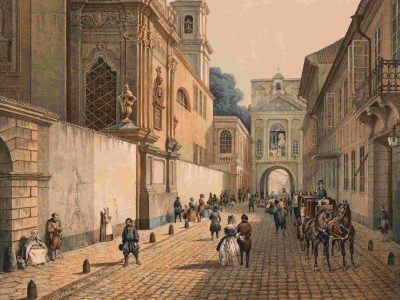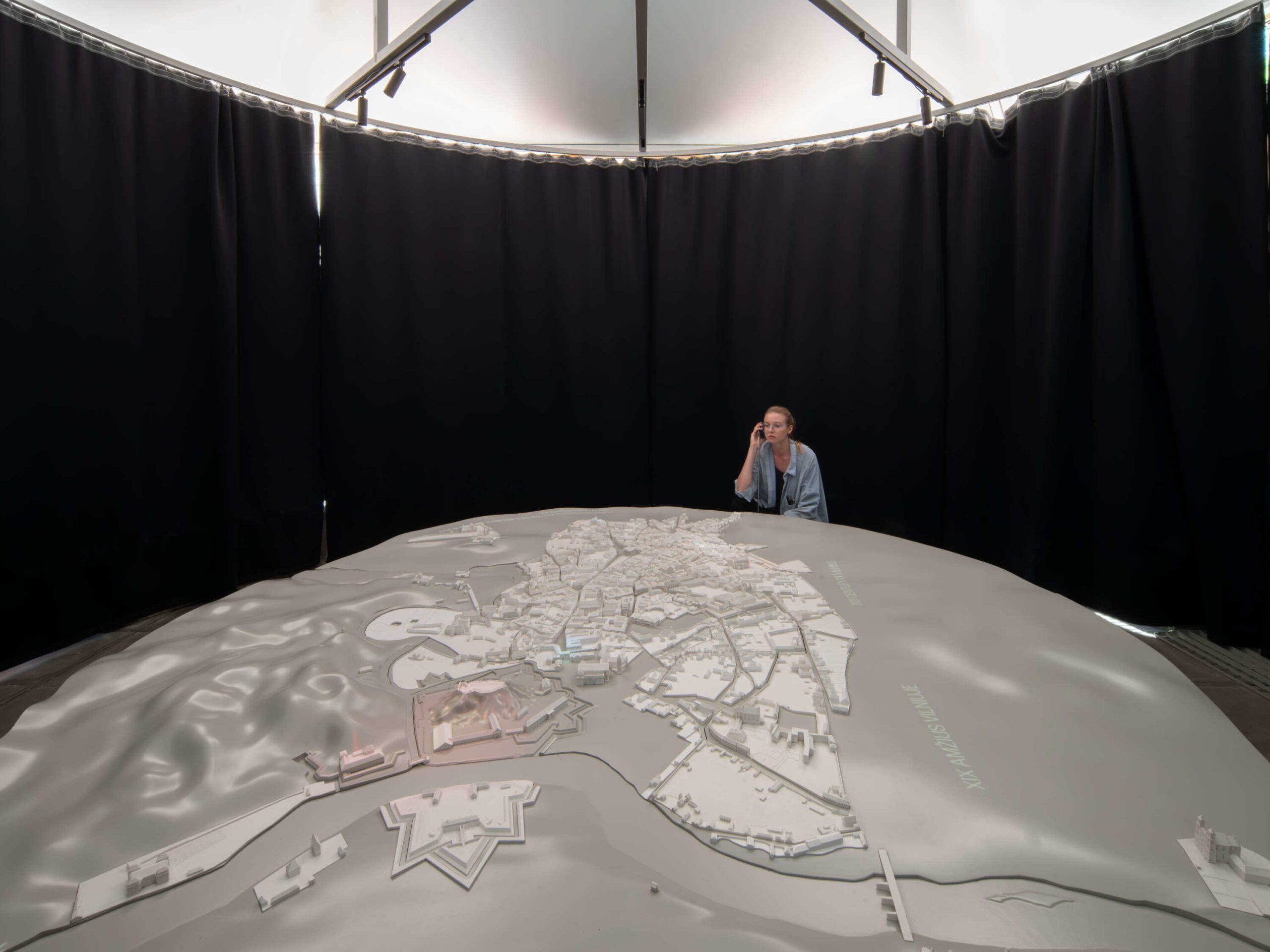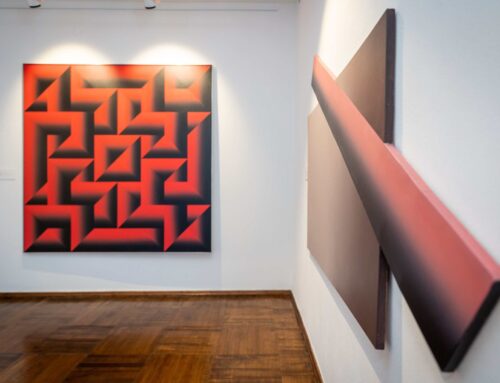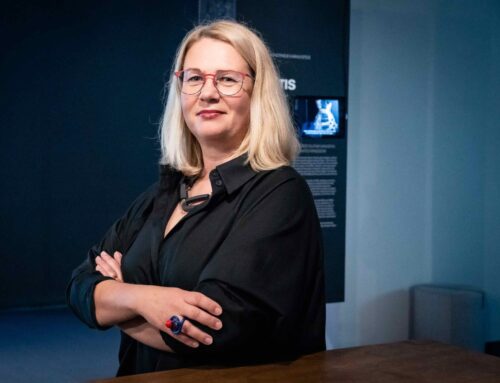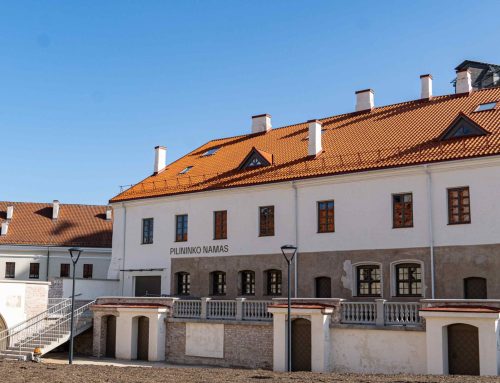As it celebrates its 700th birthday, Vilnius greets historians with surprising discoveries
2023 08 07
Today, the Lithuanian capital Vilnius is a lively, energetic, and bold city that presents itself under the slogan “700 Years Young”. But how did Vilnius look 200 years ago? A study undertaken by the National Museum of Lithuania revealed a great surprise: A model had been made of the city back in the 19th century, recording to the smallest detail the face of the city that would soon change fundamentally.
This unexpected historical discovery has developed into an extraordinary gift for the city, its people, and its guests as Vilnius celebrates 700 years of existence. The model has been restored and is currently being displayed by the National Museum of Lithuania in a pavilion entitled “Vilnius 200 Years Ago”. This was made possible using recently discovered archival drawings on over 50 large format sheets.
Preparing such material two hundred years ago was a complicated task and must have taken at least several years to complete. Documenting the city was done without any equipment, simply by walking the streets, drawing and sketching every façade, window, door, and roof. Later, the model could be assembled from small wooden panels.
“We don’t know what happened to the model created back then, but our scientists have been able to determine that it was created for military purposes. At the time, Lithuania had lost its statehood and was part of the Tsarist empire. The Tsarist government feared unrest, and had just put down the 1831 Uprising. Having the entire city before their eyes was very important. It’s ironic, but very fortunate, how everything has changed since that time: We’re not only free now, but we also have this unique material about our city’s history. Historical justice has been restored, since the model created to suppress our drive for freedom has now been reborn to increase our knowledge about the city,” said the National Museum’s director Dr. Rūta Kačkutė.
How did Vilnius look 200 years ago?
Over the 700 years of its existence, the face of Vilnius changed many times, but particularly drastically in the early 19th century. The model sketches created on the threshold of that change are a priceless historical resource. They demonstrate, to the finest degree, the details of the era’s façades, and even the city’s array of colours. The differences between now and 200 years ago are astonishing: Not every place so familiar to Vilniusites and discovered by tourists and guests today are immediately recognizable. The development of the city in that period was still quite archaic – with narrow streets and rural suburbs. The Old Town was much denser, with outbuildings still standing alongside homes. These were later demolished, and such medieval features as city gates and defensive walls, still visible in the model, vanished. The most noticeable detail is that the model still lacks Gediminas Avenue, which pierced the Old Town like an arrow, or the imperial Naujamiestis (New Town), and the streets along the Neris River – lined with historical buildings today – then marked the outskirts of the city, complete with sprawling garden plots.
The model also contains signs of what was a complicated period for the Lithuanian state. Not many people today know that the Tsarist government had placed cannons, aimed outward at the city, upon Gediminas Hill, today considered a symbol of Lithuanian statehood. For many years, the entire area around the hill was an inaccessible fortress – but today it is the most visited site in Vilnius. The model also shows huge ditches dug into Gediminas Hill and platforms for the cannons. So that rebels could not approach the fortress unnoticed, the expansive bishop’s palace and its two towers on Cathedral Square, and other buildings still visible in the model, were demolished.
“The model created two hundred years ago was very precisely documented. This allowed us to convert the drawings into a 3D version and recreate the Vilnius city model using contemporary methods. To exhibit it, we chose an exceptional architectural solution: the creation of an accessible pavilion in a public city space. By doing so, we not only stepped outside traditional museum spaces, we also blended into the fabric of the city,” says project director Asta Ivanauskienė.
The 19th century model of Vilnius will be on display until 15 October 2023 at the National Museum of Lithuania’s “Vilnius 200 Years Ago” Pavilion, opened to celebrate the city’s 700th anniversary. Admission is free and the experience has been adapted for foreign tourists: Audio narratives exploring the model have been recorded in Lithuanian, Polish, and English.
The Vilnius 200 Years Ago Pavilion project of the National Museum of Lithuania is part of the Vilnius 700th Anniversary Program. The developer of the Vilnius 700th Anniversary Celebration is the Vilnius City Municipality, and the program has been curated by the Go Vilnius Tourism and Development Agency. The program has been financed by the Vilnius City Municipality and the Chancellery of the Government of the Republic of Lithuania. The pavilion has also been supported by the Lithuanian National Commission for UNESCO and is partially financed by the Lithuanian Council for Culture.

